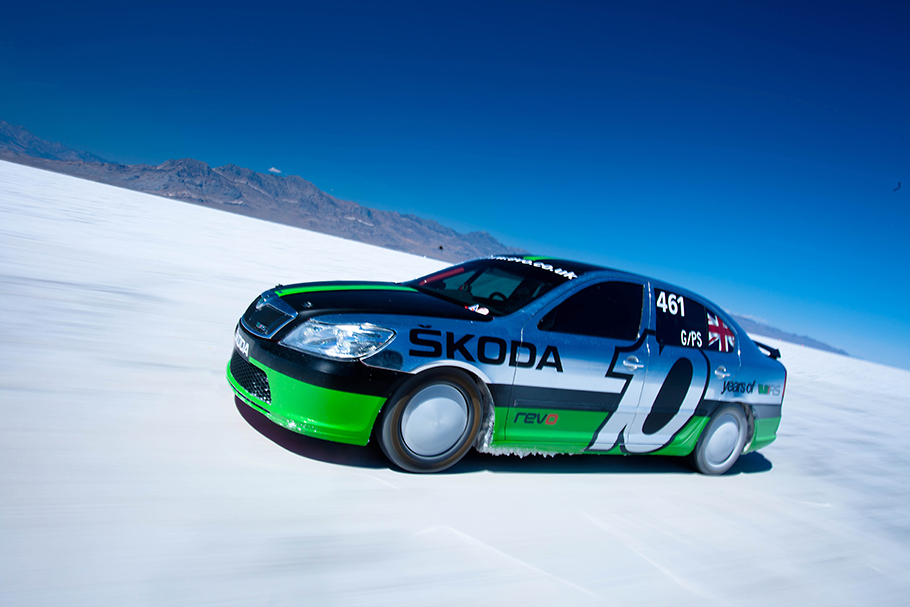ŠKODA team celebrates the 10th anniversary of its Land Speed Record sprint
 SKODA is celebrating the 10th anniversary of the land speed record of the famous Bonneville Salt flats in Utah, USA. Back in 2011, Friday, 19th of August, an exclusively tuned SKODA Octavia RS, driven by journalist Richard Meaden, officially became the fastest 2.0-liter forced injection production vehicle, registering a Southern California Timing Association (SCTA) sanctioned speed of 227.080mph.
SKODA is celebrating the 10th anniversary of the land speed record of the famous Bonneville Salt flats in Utah, USA. Back in 2011, Friday, 19th of August, an exclusively tuned SKODA Octavia RS, driven by journalist Richard Meaden, officially became the fastest 2.0-liter forced injection production vehicle, registering a Southern California Timing Association (SCTA) sanctioned speed of 227.080mph.
To celebrate, SKODA team made a complete restoration of the 2011 Ocativa vRS, returning it to the same specs that were featured through the final run at the salt flats. The restored sports car was put through its paces at Millbrook Proving Grounds' high-sped bowl by members of the motor press, alongside a selection of some of SKODA's greatest performance models, past and present.
Recalling ŠKODA's record-breaking visit to Bonneville, Meaden said: Driving the salt flats was a dream come true. It always felt like a privilege to be allowed to charge flat-out down the salt. Knowing how much passion and hard work went into getting the Octavia to Speed Week made that privilege all the greater. I'm incredibly proud of what we all achieved and will never forget how it felt to break a record or to be part of such an exceptional group of people.
Despite the fact that the 2011 Octavia became the first SKODA to hold an official Land Speed Record, the initial goal of Skoda team was to break the 200mph barrier. The breaking run consisted of two official sprints of Bonneville's famous five-mile course - the first scored a highest speed at 225.513mph on Thursday 18 August, and the return marked 228.647mph on Friday 19 August.
As it comes to the vehicle itself, the Octavia was originally designed to join SKODA UK press fleet before being requisitioned for the Bonneville project.
SEE ALSO: The all-new 2023 Nissan Z is about to make its world debut [VIDEO]
Based on a production Octavia vRS 2.0 TSI, the Bonneville Special has undergone tons of modifications in order to qualify and have a chance to break a record. Under the regulations of Southern California Timing Association, only a certain set of mods were allowed. Such were an injection system modded to deliver more fuel to the engine, and a cooling system which benefited from the addition of a 10-litre radiator. The longer-geared transmission from an Octavia GreenLine was also installed to enable a higher top speed, while the traditional brake discs and calipers were removed and replaced by a parachute to ensure the car could safely stop on the salt surface. Operated by a lever in the cabin, this had the added advantages of reducing excess drag, unsprung weight and friction.
![2013 Skoda Octavia RS and Octavia Combi RS [video]](http://www.automobilesreview.com/uploads/2013/07/skoda-octavia-combi-vrs-b.jpg)







